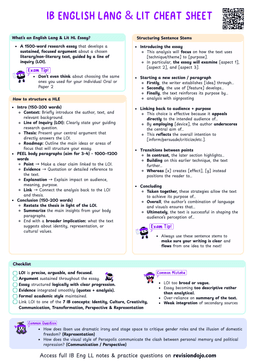Visual Texts Follow The Same Rules As Written Ones
- Every element, like color, layout, font, and body language is a deliberate choice by the creator, just like word choice in a speech or short story.
- As always, you're still asking: what’s the message, and how is it being delivered?
Visual texts can include photographs, advertisements, posters, infographics, or even paintings.
How to Analyze a Visual Text
- One of the most effective ways to analyze a visual is to follow the natural path your eyes take because there's a reason why you're drawn to it.
- This works because:
- You begin with impact: What jumps out first usually carries emotional weight.
- You create logical flow: Each observation connects smoothly to the next.
- You reflect real viewer experience: Your reader will likely notice things in a similar order.
Look for elements such as framing, color, text, and sequencing.
Key Elements to Consider
- Framing
- How is the subject positioned within the image?
- Is it centered, off to the side, or framed by other elements?
- Color
- What colors are used?
- What emotions or associations do they evoke?
- Text
- Are there any words or phrases included?
- How do they complement or contrast with the visual elements?
- Sequencing
- If the visual text is part of a series (e.g., a comic strip or storyboard)
- How do the images progress to tell a story?
- In an advertisement, a product might be placed in the foreground to draw attention, while a bold color scheme creates a sense of urgency.
- The accompanying slogan reinforces the message, making the viewer more likely to remember the product.
Framework: PANDA

Analyzing an advertisment with PANDA

- P: Point of View
- The viewer is placed slightly below the bottles, looking upward.
- This low-angle view makes the product appear larger-than-life, almost heroic.
- We’re positioned to admire it.
- A: Action Depicted
- There’s no literal movement, but the radiating background and tilted bottles suggest energy and momentum.
- The placement mimics a product “lineup,” as if they’re ready to charge forward.
- N: Narrative Suggestion
- The ad suggests a story of refreshment and power.
- Prime isn’t just a drink, it’s an energy-boosting lifestyle.
- The bottles stand proud and colorful, framed by tropical leaves and ice, implying summer, athleticism, and coolness.
- D: Design Elements
- Color: Bright, varied colours catch attention and target a youthful audience.
- Layout: Bottles tilt inward, leading the eye to the bold "PRIME" text, reinforcing brand identity.
- Font: Block capitals are assertive and modern, bold, confident branding.
- Background: Light blue rays and palm leaves create a vibrant, holiday feel.
- Ice imagery: Reinforces the cooling, refreshing theme.
- A: Audience Reaction
- The viewer is meant to feel energised and impressed.
- The tone is aspirational: drink Prime and you’ll feel ready to take on the day.
- It uses color and layout to create visual excitement, while the tagline promises direct benefits: “Boost your energy levels and stay refreshed.”
Comics
- When it comes to analysing comics and cartoons, the same principles still apply.
- You're dealing with a visual sequence, just like a story unfolding across frames.
Facial Expressions & Gestures
- Characters in comics communicate visually, not just through words.
- A furrowed brow, wide eyes, slouched shoulders, these all contribute to tone and meaning, just as they would for someone in real life.
These visual cues influence how the audience feels and help build atmosphere: fear, humour, awkwardness, tension.
Change Over Time
- Unlike single-frame ads or posters, comics use multiple panels.
- This gives them the power to show progression.


